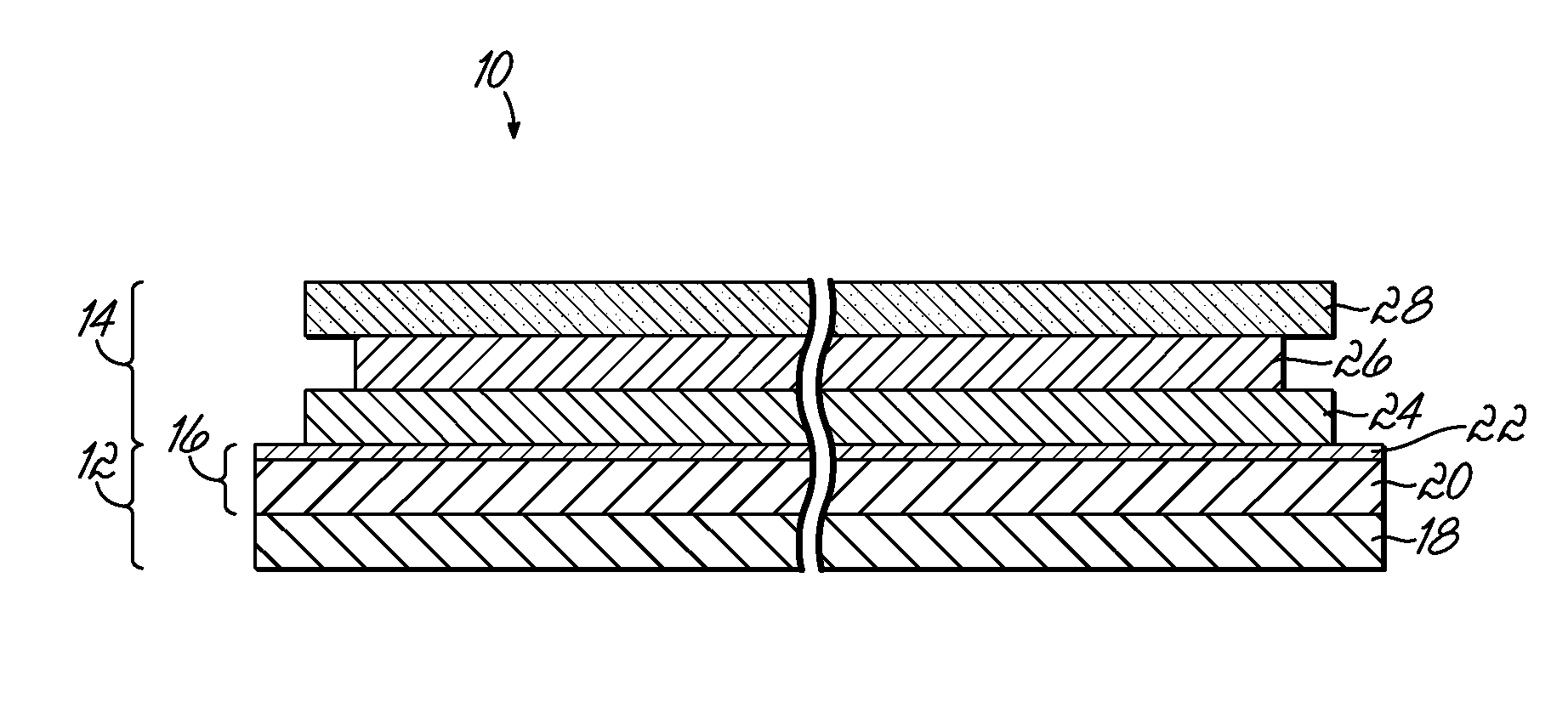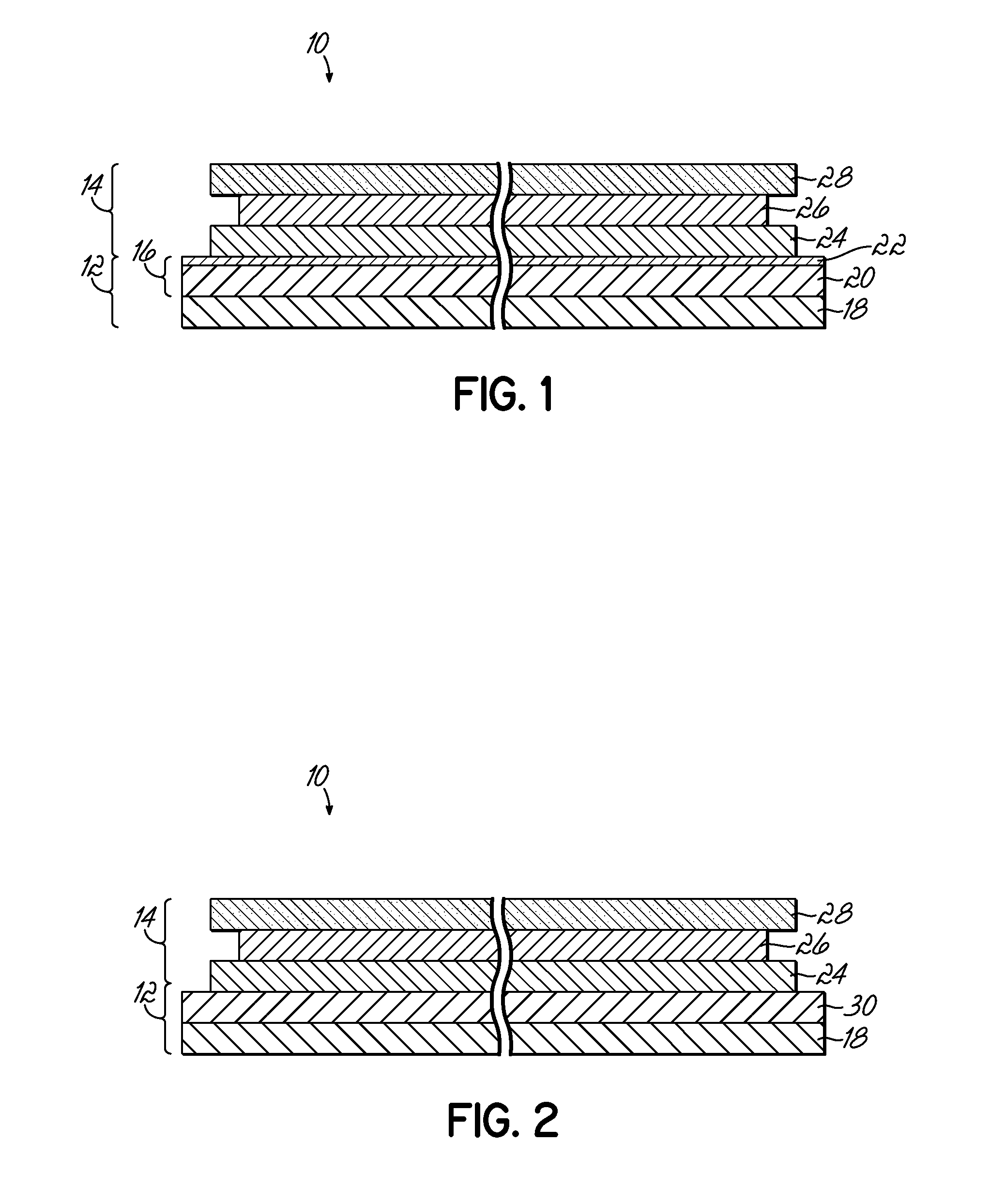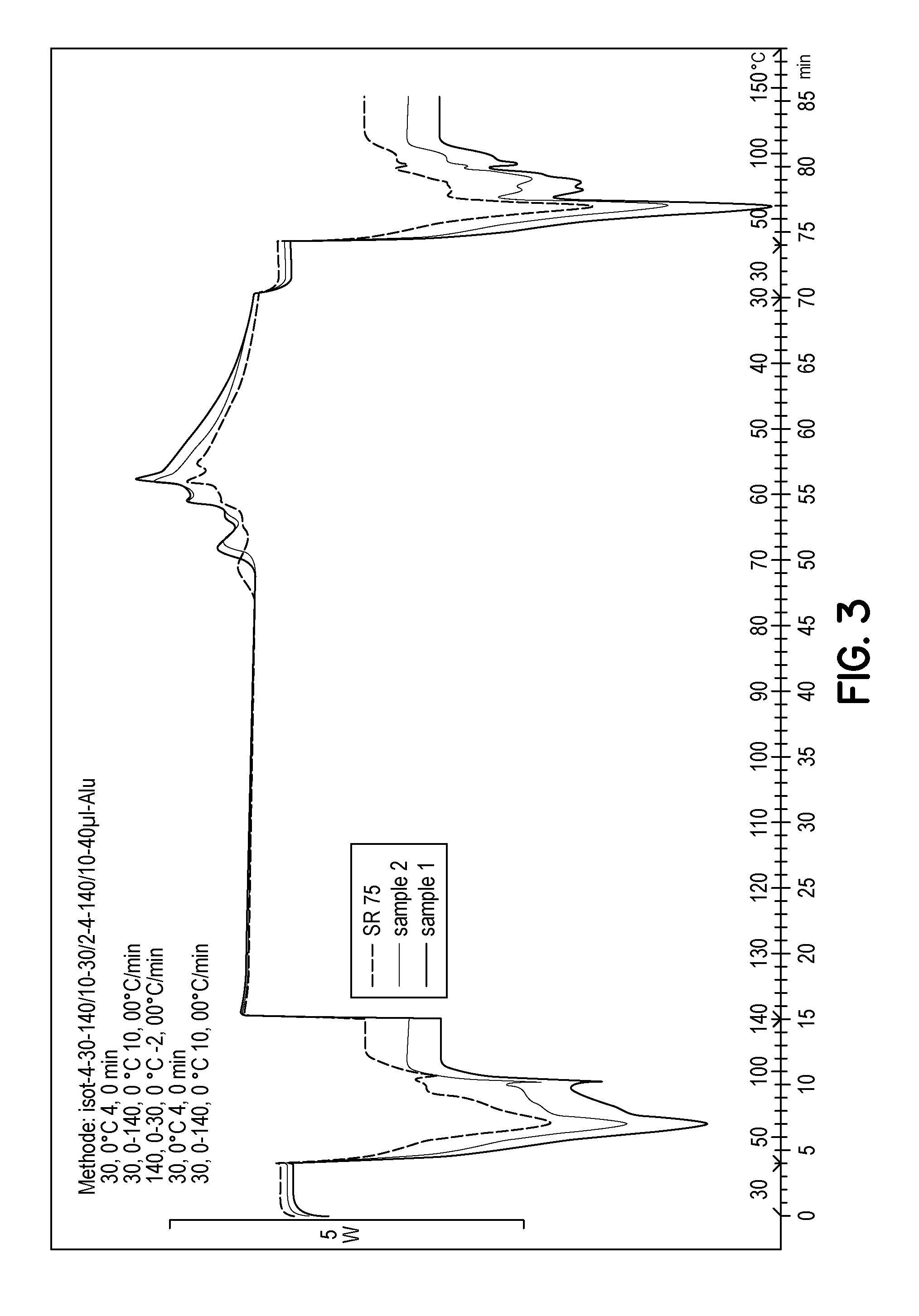Release Formulation for Label Including Synthetic Wax
a technology of synthetic wax and release formulation, applied in the field of labels, can solve the problems of label appearance, label splotchy, and ruined aesthetic appearance of wax or wax, and achieve the effects of reducing or eliminating the use of montan wax, avoiding drawbacks, and increasing cos
- Summary
- Abstract
- Description
- Claims
- Application Information
AI Technical Summary
Benefits of technology
Problems solved by technology
Method used
Image
Examples
example 1
Comparison of Performance Characteristics
[0073]FIGS. 3 and 4 are graphs showing a comparison of certain performance characteristics of a typical wax release formulation including montan wax (“SR75”), as compared to certain performance characteristics of release formulations that either reduce the fraction of montan wax in the formulation (“Sample 1”) or eliminate the fraction of montan wax in the formulation (“Sample 2”).
[0074]More specifically, FIGS. 3 and 4 show thermal curves of the three formulations subjected to differential scanning calorimetry. As is known to those of ordinary skill in the art, differential scanning calorimetry is a thermo-analytical technique in which the difference in the amount of heat required to increase the temperature of a sample and a reference is measured as a function of temperature (and particularly measures the points of phase transitions of the sample as compared to a reference). In the graphs of FIGS. 3 and 4, the comparison occurs between three...
example 2
Comparison of Color Difference
[0077]The three wax formulations described above in Example 1 (SR75, Sample 1, and Sample 2) were also tested to determine any level of discoloration in the samples. As described above, one of the drawbacks to current formulations including montan wax is that at the temperatures requires for coating the release layer onto the carrier, the montan wax may discolor (e.g., yellow), thereby detracting from the aesthetic appearance of the label. In order to compare the current formulations (e.g., SR75) with those including 50% montan wax (e.g., Sample 1) and samples including no montan wax (e.g., Sample 2), the three wax formulations from Example 1 were subjected to 2-hour-long dwell times at two different temperatures. In a first test, each of the formulations was held at 300° F. for two hours and then the “Delta E” was measured. Delta E is a common color metric for a difference in color between samples. This difference allows people to quantify the notion o...
PUM
| Property | Measurement | Unit |
|---|---|---|
| temperatures | aaaaa | aaaaa |
| melting point | aaaaa | aaaaa |
| melting point | aaaaa | aaaaa |
Abstract
Description
Claims
Application Information
 Login to View More
Login to View More - R&D
- Intellectual Property
- Life Sciences
- Materials
- Tech Scout
- Unparalleled Data Quality
- Higher Quality Content
- 60% Fewer Hallucinations
Browse by: Latest US Patents, China's latest patents, Technical Efficacy Thesaurus, Application Domain, Technology Topic, Popular Technical Reports.
© 2025 PatSnap. All rights reserved.Legal|Privacy policy|Modern Slavery Act Transparency Statement|Sitemap|About US| Contact US: help@patsnap.com



